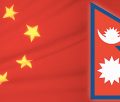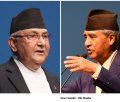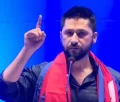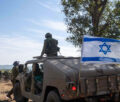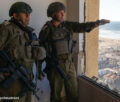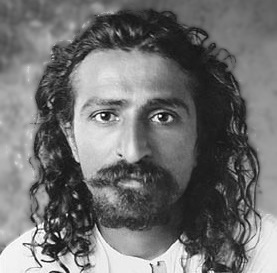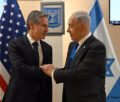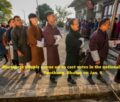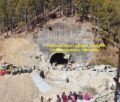Challenges of Tracking Human Networks

People use human networks to organize the control of resources and geography. No person alone can control anything of significance. Presidents, drug lords and CEOs rely on people to execute their strategies and are constrained by the capabilities and interests of the people who work for them. Identifying these networks may be a daunting task depending on the network. For obvious reasons, criminal organizations and militant networks strive to keep their membership secret, and it is not always apparent who gives the orders and who carries out the orders in a political body. To discern who’s who in a group, and therefore whether an individual matters in a group, requires both intelligence and analysis to make sense of the intelligence.
How intelligence is acquired depends on the resources and methods available to an intelligence organization, while the analysis that follows differs depending on the intent. For example, International Security Assistance Force military operations aimed at disrupting militant networks in Afghanistan would require the collection of informants and signals intelligence followed by analysis to pinpoint the exact location of individuals within a network to enable targeted operations. Simply knowing who belongs to a militant network and their location is not enough; the value lies in the significance and capabilities of an individual in the group. Detaining an individual who lays improvised explosive devices on a road may result in short-term disruptions to the target’s area of operations, but identifying and detaining a bombmaker with exclusive experience and training will have a far greater impact.
The true value of analysis lies in understanding the significance of a particular individual in a network. Mapping out a human network begins with the simple question of who belongs to a particular network. Next, identify and define relationships with other known individuals and organizations. For some, this process takes the form of link analysis, which is a visual representation of a network where each individual is represented in a diagram. Links between the individuals who interact with one another are then depicted. These links show an individual’s significance in a group and establish whether he is a lowly scout within a transnational criminal organization who may only interact with his paymaster. The paymaster, by contrast, could be linked to dozens of other group members. Examining how many links within a group an individual has, however, is just scratching the surface of understanding the network.
Every individual within a given human network has reasons to be tied to others within the network. Understanding what unites the individuals in an organization provides further depth of understanding. Whether it be ideology, mutual interests, familial ties or paid services, why a relationship exists will help determine the strength of such bonds, the motives of the network and the limitations to what a network can accomplish. For example, when assessing the strength of the Syrian regime, it is imperative to identify and examine the inner circle of President Bashar al Assad. Analyzing these members can indicate which factions of the Syrian population and which political and familial groupings support or reject the al Assad regime. That key posts within the government are now occupied primarily by Alawites indicates a combination of regime distrust of the Sunnis and dwindling levels of support from even high-ranking Sunnis. Similarly, examining the once-strong ties of inner circle members who have defected indicates which factions no longer support the regime and points toward other groups that might also have doubts about remaining loyal.
Rarely is there a completely isolated human network. Human relations typically span multiple regions or even continents. Politicians can have their own business interests, drug traffickers may have counterparts in another country and militant groups may have the sympathy of other groups or even members in a state’s government. There are no limits on how separate networks may interact with one another. Understanding a group’s ties to other groups further defines the original group’s influence. For example, a political leader at odds with the powerful military of his state may find significant constraints in governing (due to the limitations within the human network on figures linking the military assets to political leaders). A drug trafficker with a law enforcement officer on his payroll will likely find less resistance from authorities when conducting illicit business (due to the capabilities that a police officer would provide to the network).
The reasons for, and methods of, defining a human network will vary depending on the intelligence organization. A nation with vast resources like the United States has an exceptionally large focus on human networks around the world and a full array of intelligence disciplines to gather the necessary information. At Stratfor, our reasons to map the intricate web of human relations within an organization differ as we look to understand the constraints that human networks place on actors.
Challenges of Tracking Human Networks
The individuals in an organization are constantly changing. This means the job of mapping the driving forces in an organization never ends, since relations shift, roles change and individuals often are taken out of the picture altogether. As a result, intelligence collectors must continually task their intelligence assets for new information, and analysts must continually update their organizational charts.
Logically, the more fluid the membership of an organization, the more difficult it is for an intelligence organization — or rival organization — to follow it. As an example, take Los Zetas, who dominate the Mexican border town of Nuevo Laredo. The group always will have individuals in the city in charge of running daily criminal operations, such as coordinating gunmen, drug shipments, money laundering and retail drug sales. Within a Mexican transnational criminal organization, the person filling this role is typically called a “plaza boss.” Several alleged Zetas plaza bosses of Nuevo Laredo were killed or captured during 2012 in Mexican military operations. With each kill or capture, an organization must replace the former plaza boss. This frequent succession of plaza bosses obviously reshapes the human network operating in Nuevo Laredo.
It is no simple matter for a collector to ask his informants about, or to eavesdrop through surveillance, for information about the personnel changes. It takes time for a new plaza boss to assume his new responsibilities. A new office manager must get to know his employees and operations before making critical decisions. Additionally, an intelligence collector’s assets may not be able to provide updates right away. In the case of an informant, does the informant have the same access to the new plaza boss as the former? Roles are more constant within an organization and can be split up among individuals. Thus, a person who had handled both gunmen and drug shipments may be replaced by two people to break up the responsibilities. Therefore, collectors and analysts must seek to understand the roles of the new plaza boss and whether he has the same influence as the prior one.
What We Do
Understanding that the players within organizations change frequently, but that the roles and constraints of an organization transform far more slowly, is key to how Stratfor approaches human networks. For the leader of a nation, the geopolitical imperatives of the nation serve as impersonal forces directing the decisions of a rational individual. For a criminal or insurgent leader, there is only so much that can be done while attempting to avoid notice by law enforcement and the military, and the organization’s imperatives will likely remain in place. In determining the constraints and imperatives, we can better identify the significance and courses of actions of an organization without necessarily knowing the details about the individuals serving specific roles.
Particularly with more clandestine human networks, we continually examine the external effects of known personnel changes. For example, how has the death of a Taliban leader in Pakistan affected the operations of the Tehrik-i-Taliban Pakistan as a whole, such as in the case of the Jan. 3 death of Taliban leader Maulvi Nazir in South Waziristan? Nazir commanded a relatively benign faction of the Pakistani Taliban that kept more aggressive, anti-government factions out of South Waziristan. His removal, and the nature of his removal, could invite militants waging an active fight against the Pakistani government to return to South Waziristan. Ultimately, Nazir was a distinct figure in the Pakistani militant network due to his alliance with Islamabad. While his removal won’t change the fact that militants will thrive on the Pakistani-Afghan border (which geography dictates), it does marginally tilt the balance away from Islamabad and toward the militants.
With the example of Los Zetas in Nuevo Laredo, we know Nuevo Laredo is a critical location for the transnational criminal organization. As a border town with one of the highest volumes of cross-border commercial shipping to the United States, the city serves as one of the principal sources of revenue for Zetas drug traffickers. For this reason, Los Zetas will certainly continue to replace figures who are removed by military and law enforcement.
Using this known behavior and the imperatives, we can learn about Los Zetas elsewhere in Mexico: By observing the group at a broader geographic level, we can deduce the significance of a capture or death in a specific locale. If the losses of personnel in Nuevo Laredo have had a significant impact on the organization, operations would likely suffer in other geographic areas as the group accommodates its losses in Nuevo Laredo.
In forecasting the political, economic or security climate of a geographic region, understanding human networks must be incorporated into any analysis. Areas such as Mexico and Syria have geographic elements that define conflicts. Mexico’s location between the cocaine producers of the northern Andes and cocaine consumers in the United States ensures that groups will profit off the cocaine flow from south to north. The Sierra Madre Occidental and Sierra Madre Oriental divide trafficking corridors between the east and west coasts of Mexico. But geography alone can’t be used to predict how groups will organize and compete with each other within those trafficking corridors.
Predicting the spread and scope of violence depends on knowledge of the human network and of who controls the resources and terrain. Similarly, the geographic significance of the Levant to Iran and Iraq determines the importance of Syria as an access point to the Mediterranean, but that alone doesn’t determine the future of al Assad’s regime. Understanding who his most trusted confidants are, what their relationships are based on and watching their moves enables us to filter the constant news of death and destruction coming out of Syria and to focus on the individuals who directly support al Assad and determine his immediate fate.
Inasmuch as humans can overcome geography, they can do so through organizations that control terrain and resources. Understanding the nature of those organizations and how they control those assets requires knowledge of the human network.
Reprinted with the permission of Stratfor
-
Book Shelf
-
 Book Review
DESTINY OF A DYSFUNCTIONAL NUCLEAR STATE
Book Review
DESTINY OF A DYSFUNCTIONAL NUCLEAR STATE
- Book ReviewChina FO Presser Where is the fountainhead of jihad?
- Book ReviewNews Pak Syndrome bedevils Indo-Bangla ties
- Book Review Understanding Vedic Equality….: Book Review
- Book Review Buddhism Made Easy: Book Review
- Book ReviewNews Elegant Summary Of Krishnamurti’s teachings
- Book Review Review: Perspectives: The Timeless Way of Wisdom
- Book ReviewNews Rituals too a world of Rhythm
- Book Review Marx After Marxism
- Book Review John Updike’s Terrorist – a review
-
-
Recent Top Post
-
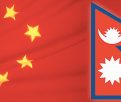 Commentaries
Impasse over BRI Projects in Nepal
Commentaries
Impasse over BRI Projects in Nepal
-
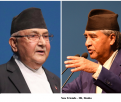 CommentariesNews
Yet another Musical Chairs in Kathmandu
CommentariesNews
Yet another Musical Chairs in Kathmandu
-
 CommentariesTop Story
Spurt in Anti-India Activities in Canada
CommentariesTop Story
Spurt in Anti-India Activities in Canada
-
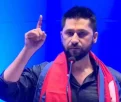 NewsTop Story
Nepal: Political Stability Under Threat Again
NewsTop Story
Nepal: Political Stability Under Threat Again
-
 NewsTop Story
Accountability Tryst With 2024 Ballot….
NewsTop Story
Accountability Tryst With 2024 Ballot….
-
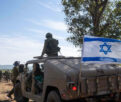 NewsTop Story
What Would “Total Victory” Mean in Gaza?
NewsTop Story
What Would “Total Victory” Mean in Gaza?
-
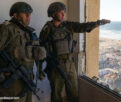 CommentariesTop Story
The Occupation of Territory in War
CommentariesTop Story
The Occupation of Territory in War
-
 CommentariesTop Story
Pakistan: Infighting in ruling elite intensifies following shock election result
CommentariesTop Story
Pakistan: Infighting in ruling elite intensifies following shock election result
-
 CommentariesTop Story
Proforma Polls in Pakistan Today
CommentariesTop Story
Proforma Polls in Pakistan Today
-
 CommentariesTop Story
Global South Dithering Away from BRI
CommentariesTop Story
Global South Dithering Away from BRI
-
AdSense code


